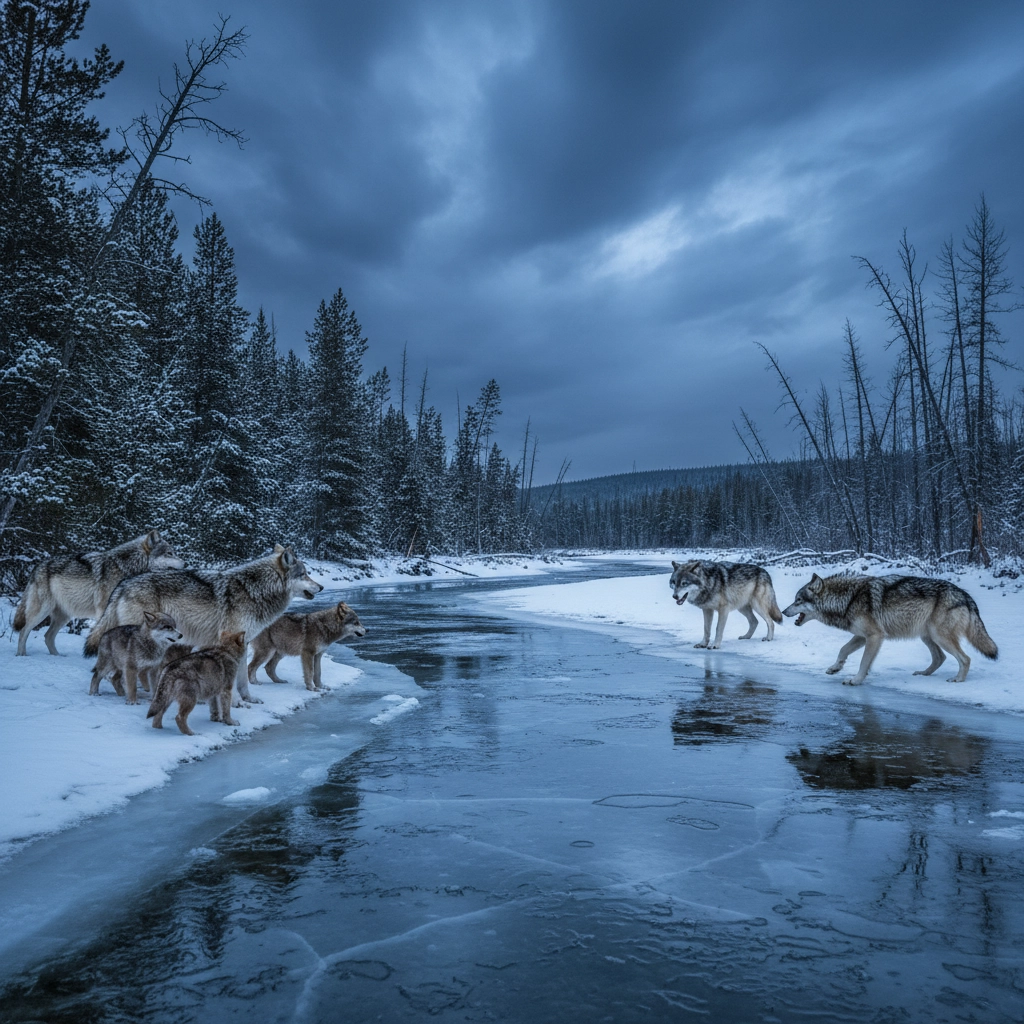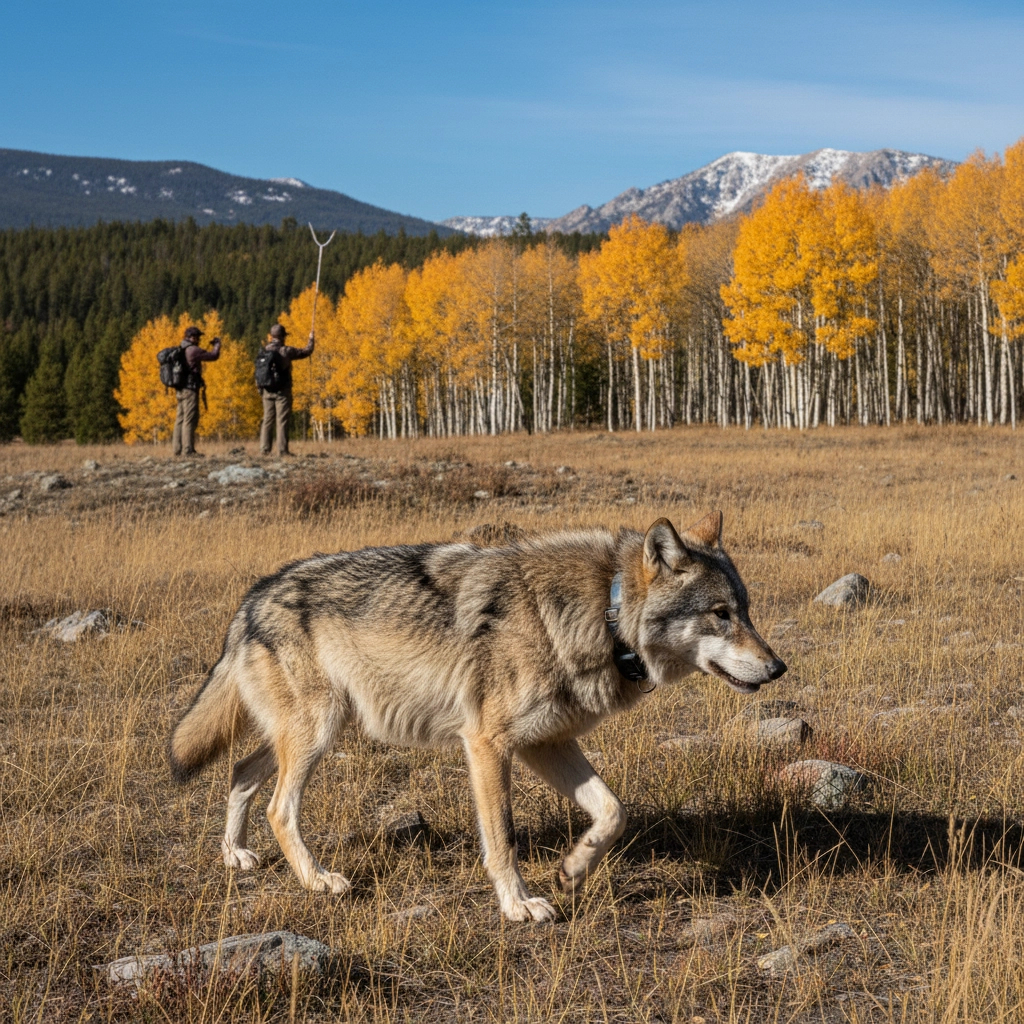The Science of Yellowstone's Wolves: Pack Behavior and Conservation Challenges
- Caleb Mullenix
- Oct 28
- 5 min read
The reintroduction of wolves to Yellowstone National Park in 1995 stands as one of the most significant wildlife conservation achievements in modern history. This landmark restoration project has provided researchers with unprecedented opportunities to study wolf behavior, pack dynamics, and ecosystem interactions in a protected environment. For educators planning student expeditions to Yellowstone, understanding these complex predator-prey relationships offers invaluable insights into conservation biology and ecosystem management principles.
Understanding Wolf Pack Social Structure
Wolf packs in Yellowstone demonstrate sophisticated social organization that extends far beyond the outdated "alpha" model. Modern research reveals a family-based structure where breeding pairs lead their offspring in cooperative hunting and territory defense. The dominant female selects den sites that serve dual purposes: providing security for newborn pups while positioning the pack strategically for summer activities.
Age and experience determine specific roles within the pack hierarchy. Wolves aged one to three years function as primary hunters, utilizing their peak speed and endurance to pursue and exhaust prey. These younger wolves possess the agility necessary to select appropriate targets and maintain pursuit until larger pack members can intervene. Adult males, approximately 20% heavier than females, contribute their size advantage to bring down ungulates that may weigh five to ten times their individual body weight.

Pack composition directly influences hunting success and territorial defense capabilities. Larger packs containing older, more experienced wolves demonstrate significantly higher success rates when hunting large prey and defending territory boundaries. This advantage explains why successful breeding pairs often maintain extended family groups, with some documented cases showing alpha males living alongside mates and up to 16 offspring in single family units.
Territorial Behavior and Inter-Pack Dynamics
Yellowstone's wolves maintain highly territorial behaviors that regulate population density across the landscape. Packs communicate territorial boundaries through sophisticated scent-marking with urine and long-distance howling that warns neighboring packs away from occupied hunting grounds. These vocal and olfactory signals serve as the first line of territorial defense, but direct confrontations frequently occur when boundaries overlap or food sources attract multiple packs.
Gender differences in aggressive behavior reveal important insights into pack protection strategies. Male wolves specialize in combat with rival packs and demonstrate remarkable courage in territorial defense, actively pursuing rivals even when outnumbered by ratios as high as 3.5 to 1. Females employ more conservative aggression thresholds, engaging in pursuit only when their pack maintains numerical superiority of at least 1.5 to 1. This male-biased territorial aggression reflects investment in protecting current offspring and securing future breeding opportunities.
Territorial competition serves as a major limiting factor on wolf population density throughout Yellowstone. Rather than allowing wolves to achieve maximum densities based solely on prey availability, territorial behaviors force packs to maintain large, exclusive hunting grounds. This social regulation results in adult mortality rates that naturally control populations below theoretical carrying capacity levels.
Conservation Challenges and Population Management
Inter-pack conflict presents one of the most severe threats facing Yellowstone's wolf populations. The park's relatively high wolf density creates intense competition, with infanticide by rival packs representing a well-documented threat where competing groups actively eliminate competitors' offspring. This danger compels packs to undertake risky long-distance migrations with vulnerable pups despite considerable hazards involved.

Recent incidents illustrate these conservation challenges dramatically. In 2024, the Rescue Creek pack attacked the Junction Butte pack near a bison carcass outside park boundaries, resulting in the death of 907F, Yellowstone's oldest documented wolf. This matriarchal figure was protecting five pups when the attack occurred, demonstrating how pack protection instincts can expose individuals to fatal risks. The loss triggered significant pack restructuring challenges, with surviving pups requiring adaptation to new leadership dynamics following the disappearance of both breeding adults.
Climate change introduces additional complexity to wolf conservation efforts. Temporal shifts in elk migration timing, driven by changing weather patterns and habitat modifications, compel wolf packs to adapt dynamically to follow shifting prey distributions. Elk populations now arrive at winter ranges substantially later than in previous decades, forcing wolves to modify traditional hunting patterns and territorial movements.
Dietary Adaptations and Prey Relationships
Yellowstone wolves demonstrate remarkable dietary flexibility that reflects both prey availability and seasonal changes. During winter months, approximately 90% of wolf prey consists of elk, with smaller percentages including deer and increasing amounts of bison scavenging. Summer hunting patterns diversify to include 10-15% deer populations alongside continued elk predation.

The relationship between wolves and bison represents an evolving dynamic of particular scientific interest. As bison populations have increased and wolves have gained experience hunting these massive prey animals, pack strategies have adapted to incorporate more bison into their dietary repertoire. This adaptation demonstrates the behavioral flexibility that has enabled wolves to thrive in Yellowstone's diverse ecosystem.
Scavenging opportunities also play crucial roles in wolf nutrition and ecosystem interactions. When wolves make kills, numerous species benefit from their hunting success: ravens and magpies arrive almost immediately, coyotes wait nearby for feeding opportunities, bears frequently chase wolves from fresh kills, and eagles plus invertebrates consume remaining carrion. These complex feeding relationships illustrate how apex predators structure entire food webs through their hunting activities.
Ecological Impact and Trophic Cascades
The reintroduction of wolves has initiated cascading ecological changes throughout Yellowstone that extend far beyond direct predator-prey interactions. Wolves efficiently hunt large ungulates that other predators cannot typically kill, fundamentally altering prey population dynamics and carrion distribution patterns across the landscape. This predation pressure has modified elk behavior, reducing grazing pressure in sensitive riparian areas and allowing vegetation recovery in critical habitats.
Evidence of trophic cascade effects includes increased beaver populations and recovering aspen vegetation communities. These changes demonstrate how apex predators influence entire ecosystem properties through complex behavioral and ecological pathways. The relationship between wolves, prey species, and other carnivores including mountain lions, grizzly bears, and black bears now collectively regulates ungulate populations in ways that human hunting alone cannot replicate.
Research Applications for Student Learning
Understanding Yellowstone's wolf science provides exceptional educational opportunities for students studying ecology, conservation biology, and wildlife management principles. The complexity of pack behavior, territorial dynamics, and ecosystem interactions offers real-world examples of theoretical concepts taught in biology and environmental science curricula.

Field research techniques employed in wolf studies demonstrate scientific methodology in action, from radio collar tracking to genetic analysis and behavioral observation protocols. Students can examine how researchers collect data on pack composition, territorial boundaries, and hunting success rates while considering the ethical implications of wildlife research and management decisions.
The ongoing challenges facing Yellowstone's wolves also provide case studies in conservation problem-solving. Issues including climate change adaptation, human-wildlife conflict management, and population regulation strategies illustrate the complex decision-making processes required in modern conservation biology. These examples help students understand how scientific research informs policy decisions and management practices in protected areas.
Future Conservation Considerations
As Yellowstone's wolf population continues to evolve, researchers face ongoing challenges in maintaining viable populations while managing ecosystem impacts. The park's wolves now serve as source populations for natural recolonization efforts in neighboring states, making their conservation success increasingly important for regional wolf recovery programs.
Long-term monitoring efforts continue documenting how wolf packs adapt to changing environmental conditions, prey population fluctuations, and human activities near park boundaries. These research findings contribute essential knowledge for managing predator-prey relationships and maintaining carnivore populations throughout the Greater Yellowstone Ecosystem.
The scientific insights gained from Yellowstone's wolves represent invaluable contributions to wildlife conservation worldwide. Their recovery demonstrates how ecosystem restoration can succeed when supported by dedicated research, adaptive management strategies, and public commitment to conservation goals. For students studying these remarkable predators, Yellowstone's wolves offer compelling examples of resilience, adaptation, and the intricate connections that sustain healthy ecosystems.



Comments